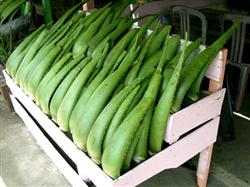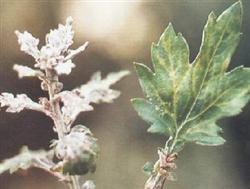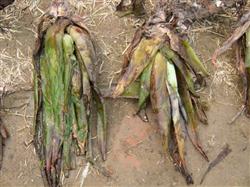Cultivation techniques of Edible Aloe

Section 1 Overview
Aloe is a perennial succulent herb of Liliaceae. Originated and mainly distributed in the African continent, Yuanjiang in Yunnan Province of China has wild resources.
The edible part of aloe is fleshy leaves with juicy juice, and the leaves are rich in nutrients. there are mainly a large number of B vitamins, cellulose, healing hormones, 11 kinds of free amino acids, 21 kinds of organic acids, molybdenum, zinc, germanium, boron and other 18 kinds of trace elements, physiological activities and enzyme substances such as chlorophyll and antioxidant enzymes, as well as fruit acid, polysaccharide, monosaccharide. And contains aloe tincture, aloe rice tincture, aloe Urxin and other antibacterial, anti-ulcer and other active ingredients, as a folk medicine has a history of 4000 years. In recent years, the use of aloe as a vegetable has become a craze. High-end dishes made of aloe in some countries, such as aloe salad, braised beef with aloe, fried tomato with cuttlefish and aloe, and aloe sandwiches have become popular in some famous restaurants. At present, the United States is the country with the largest number of cultivation and use of aloe vera, even in Hainan Island of China, there is an American aloe planting base, and enter the north and south markets of our country, the price is expensive.
Section II requirements for Environmental conditions
Aloe originates from the tropics and likes high temperature and dry environmental conditions.
1. Temperature
Aloe likes warmth and can withstand high temperature of 40 ℃. Aloe is not cold-tolerant and suffers frost injury when the temperature is 0 ℃. The ability of low temperature tolerance varies with different varieties, among which Aloe arborescens is more cold-tolerant.
two。 Moisture content
Aloe has strong resistance to drought and is afraid of stagnant water. it is easy to rot and die in wet soil, and it is easy to rot and die if the soil is watered too much.
3. Light
Aloe likes light, but too much exposure will make aloe in a semi-dormant state or stop growth, especially in the seedling stage exposure will make the leaves purple or dry wrinkle.
4. Soil
Aloe vera is not strict on the soil and resistant to barren, but in the barren soil and in the clayey soil, the root system is underdeveloped, the growth is slow, and the plant is small. It grows fast in the sandy soil with loose and fertile, good drainage and irrigation water and rich in organic matter, the leaves are thick, the color is thick and green, the yield is good, and the optimum pH value is 6-6.5.
5. Adaptability of varieties to environmental conditions
The soil with drought tolerance, dry heat tolerance and barren tolerance of Aloe vera has the strongest ability and the highest tillering rate. Aloe arborescens has the strongest cold resistance, and aloe vera has strong disease resistance.
Section 3 cultivation techniques
1. Preparation of seedlings
The main results are as follows: (1) seed propagation and seedling Aloe vera can blossom and blossom 2 ~ 5 years after planting, but it is not easy to obtain seeds by self-pollination. Artificial pollination is needed to obtain more seeds before the seedlings grow slowly. It takes about 3 years from seedling to adult plant, so seed reproduction is less used in production, and seeds are used to breed good new varieties.
Sowing time: protected cultivation, spring and autumn can be sown.
Sowing method: raise seedlings in seedling pot or seedling bed. The bed soil is filled with clean river sand, or fully mixed with vermiculite, peat and perlite, then loaded into a seedling basin or leveled on the seedling bed, watered thoroughly, sowed, sowed or sowed, and covered with plastic film after sowing.
Seedling management: from sowing to emergence, for example, when the temperature is 15: 30 ℃, about 30 days later, the mulch should be removed in time. The seedling basin or bed soil can not be watered or sprayed until it is dry again. When the seedling height is about 2 cm, spray 0.1% potassium dihydrogen phosphate aqueous solution, depending on the seedling growth, apply a small amount. Seedling bed seedlings need to be divided, the overdense plants are divided into another species, the seedlings are divided when the height of the seedlings is about 3cm to 5cm, or according to 6cm to 8cm square, the seedlings are dug up from the roots and divided into another pseudo-planting bed, according to the false value of 6cm by 8cm. When the seedling is about 10cm high and has six leaves and one heart, it can be transplanted in a small flowerpot or planted in a greenhouse.
- Prev

Powdery mildew of chrysanthemum needs to be treated
From late August to October, chrysanthemum powdery mildew often occurs, which can lead to poor plant growth, leaf death, or even no flowering, which needs timely control. In cultivation, pay attention to cut off the dense and yellow branches and leaves, pull out the diseased plants, clean up the diseased leaves and fallen leaves, and burn them or bury them deeply. Planting should not be too dense, control soil moisture and increase.
- Next

How to prevent cold of potted aloe
Potted aloe vera has strict requirements on temperature in winter. the lower the temperature is, the greater the harm to aloe is. When overwintering, the main measures to prevent cold are: to set up a cold ditch. You can dig a rectangular hole in the sunny leeward yard, its size depends on the number of pots and plant size of overwintering aloe, generally 50 ~ 70% deep.
Related
- Fuxing push coffee new agricultural production and marketing class: lack of small-scale processing plants
- Jujube rice field leisure farm deep ploughing Yilan for five years to create a space for organic food and play
- Nongyu Farm-A trial of organic papaya for brave women with advanced technology
- Four points for attention in the prevention and control of diseases and insect pests of edible fungi
- How to add nutrient solution to Edible Fungi
- Is there any good way to control edible fungus mites?
- Open Inoculation Technology of Edible Fungi
- Is there any clever way to use fertilizer for edible fungus in winter?
- What agents are used to kill the pathogens of edible fungi in the mushroom shed?
- Rapid drying of Edible Fungi

